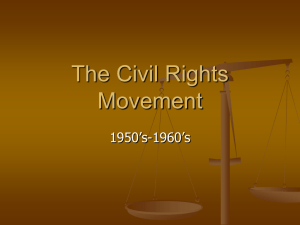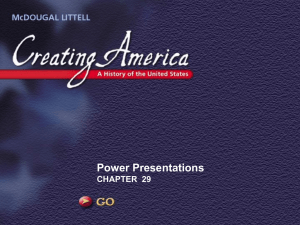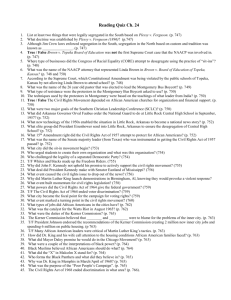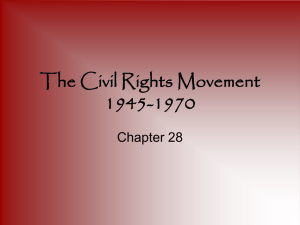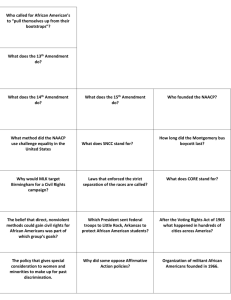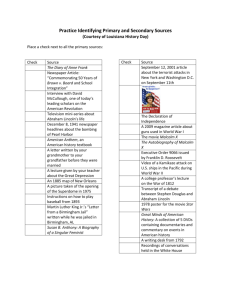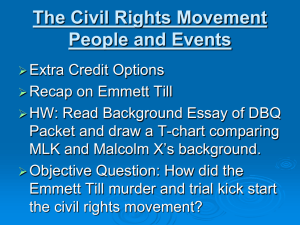Name Date______________ Class_________ Civil Rights 31.3
advertisement
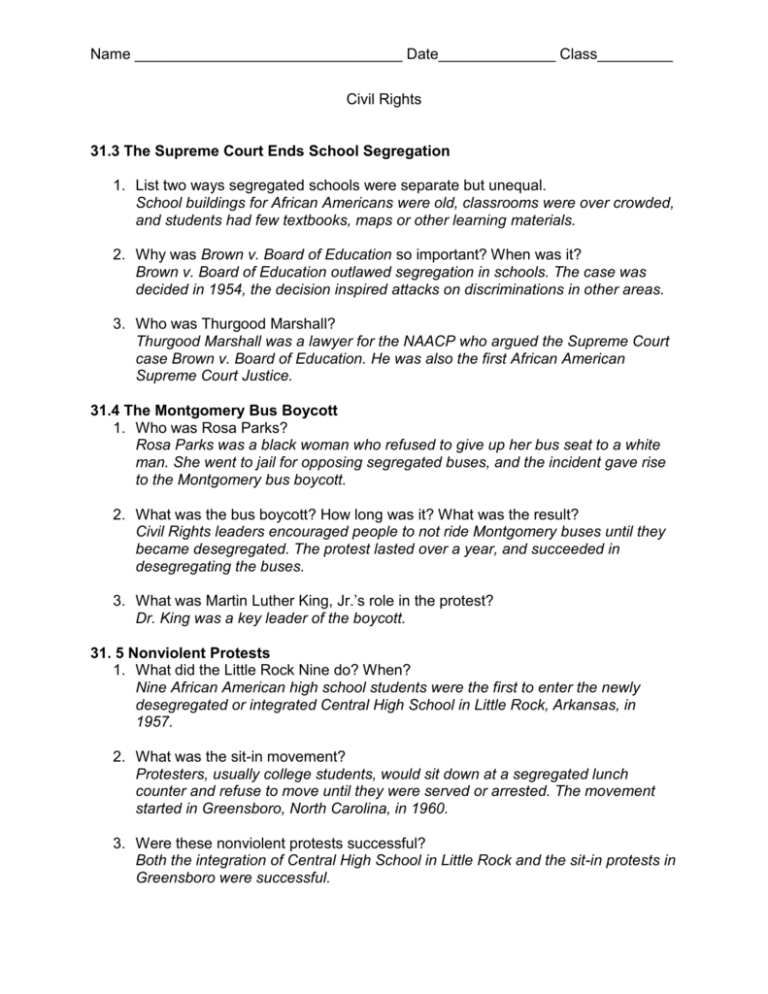
Name ________________________________ Date______________ Class_________ Civil Rights 31.3 The Supreme Court Ends School Segregation 1. List two ways segregated schools were separate but unequal. School buildings for African Americans were old, classrooms were over crowded, and students had few textbooks, maps or other learning materials. 2. Why was Brown v. Board of Education so important? When was it? Brown v. Board of Education outlawed segregation in schools. The case was decided in 1954, the decision inspired attacks on discriminations in other areas. 3. Who was Thurgood Marshall? Thurgood Marshall was a lawyer for the NAACP who argued the Supreme Court case Brown v. Board of Education. He was also the first African American Supreme Court Justice. 31.4 The Montgomery Bus Boycott 1. Who was Rosa Parks? Rosa Parks was a black woman who refused to give up her bus seat to a white man. She went to jail for opposing segregated buses, and the incident gave rise to the Montgomery bus boycott. 2. What was the bus boycott? How long was it? What was the result? Civil Rights leaders encouraged people to not ride Montgomery buses until they became desegregated. The protest lasted over a year, and succeeded in desegregating the buses. 3. What was Martin Luther King, Jr.’s role in the protest? Dr. King was a key leader of the boycott. 31. 5 Nonviolent Protests 1. What did the Little Rock Nine do? When? Nine African American high school students were the first to enter the newly desegregated or integrated Central High School in Little Rock, Arkansas, in 1957. 2. What was the sit-in movement? Protesters, usually college students, would sit down at a segregated lunch counter and refuse to move until they were served or arrested. The movement started in Greensboro, North Carolina, in 1960. 3. Were these nonviolent protests successful? Both the integration of Central High School in Little Rock and the sit-in protests in Greensboro were successful. Name ________________________________ Date______________ Class_________ 31.6 Filling the Jails in Birmingham 1. Why did Civil Rights leaders want to protest in Birmingham? Dr. King and his supporters knew that news coverage of the brutality of Bull Connor would help their cause by showing America the ugliness of southern racism. 2. What was King’s “Letter from a Birmingham Jail”? King was arrested during the demonstrations in Birmingham. In jail, he wrote a letter in which he explained that tensions between the races were not caused by protests, but by the discrimination suffered by African Americans. 3. What were the children’s marches? In an attempt to “fill up the jails” after most adult demonstrators had been arrested, children marched and were arrested. The children succeeded in filling the jails and capturing the attention of the American public. 31.7 The March on Washington and Civil Rights Laws 1. When was the March on Washington and what was its famous speech? The March on Washington was in 1963, and it featured Martin Luther King, Jr.’s “I Have a Dream” speech. 2. What were the Civil Rights Act of 1964 and the Voting Rights Act? The Civil Rights Act of 1964 forbade segregation in public facilities. It banned discrimination in employment based on race, gender, religion, or nationality. The Voting Rights Act outlawed literacy tests. 3. How did Martin Luther King, Jr. die? He was assassinated in 1968. 31.8 Black Power 1. How did Malcolm X seek to improve the position of African Americans? Malcolm X urged blacks to be proud of their race and African roots. He said that blacks should build their own businesses and defend themselves. He encouraged blacks to seize their freedom by any means necessary. (Violence if it called for it.) 2. What did the Nation of Islam teach? The Nation of Islam (American organization) declared that black people were superior to whites and preached hostility between the races. This was an extremist sect of the Muslim religion here in the US. 3. How did Malcolm X die? He was assassinated in 1965.

